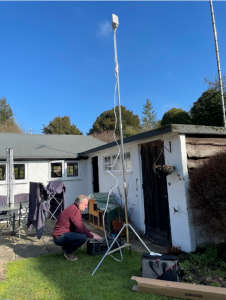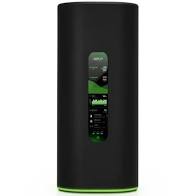You could be able to increase your internet speed over the Christmas period just by moving your router out of a particular room in your home.
As schools and businesses slowly come to a close for the Christmas break, you might find your home internet buckling under the increased traffic. Children home from school, friends and family visiting – There could suddenly be many more devices all trying to connect to your Wi-Fi at the same time.
So making sure your router is placed in the prime position could be vital in making sure Netflix streams don’t buffer, online games don’t freeze and video calls with relatives don’t stutter and fail.
How Can You Make Sure You Get the Fastest Internet Speeds Possible Over Christmas?
Hands up if you’ve got some kind of new device on your Christmas list? Imagine Santa delivers that new games console, smartphone or smart home gadget – But your Wi-Fi speed and signal can’t handle it.
Have you ever counted how many devices you have in your home that are connected to the internet at any given time? The obvious ones are smartphones, laptops and tablets. But then there’s the TV, online gaming, smart home devices like heating and lighting controls.
Then add in these new devices and it’s little wonder the Wi-Fi might start to struggle.
Here are some of our Wi-Fi experts top tips to keep your Wi-Fi quick this Christmas:
- Never keep your router in a cupboard. We know they’re not the prettiest things, especially if you have an eye for design, but hiding it away in a cupboard is going to affect the strength of the signal
- Avoid placing your router behind the TV as this can block the signal
- We know everyone is trying to be savvy with their electric use to keep bills as low as possible, but switching off your router at night isn’t a good idea as it will miss automatic updates (and it won’t save you much money either)
- Schedule a time once per month to switch the router off and reboot. This can help to clear any issues and keep it working to its full potential
- Use a tool or app to check what internet speed you are getting. If it doesn’t match what you’re paying for, then give your ISP a call.
- Place your router in the upright position it’s designed to be in – Not on it’s side or upside down
- If possible, try to position your router in the centre of your home. This will help to ensure that the signal reaches every room.
- Try not to place your router near large objects, mirrors or fish tanks as these can all inhibit the signal
- You might see a decrease in internet speed if you put up your Christmas tree directly over or in front of your router. The lights placed on the tree can, in some cases, negatively affect the signal from the router. You can read more about this here.
What Room Should You Never Have Your Router In?
There is one room in the home that has the most potential for causing interference to your router signal and wreaking havoc on your Wi-Fi. And that is the kitchen. This is the worst place you could choose to place your router.
Your router is consistently beaming out signal the whole time it’s on and connected to your ISP. The kitchen has the highest possibility of interrupting this signal due to the appliances kept and used in there.
Electronics and metal can cause a lot of problems for your Wi-Fi connection. Appliances like washing machines, fridges and ovens are metal heavy and can block the signal from your router if it is placed too close by.
Appliances and electronic devices that emit their own signal can also cause interference, like microwaves. If your router is placed near the microwave, you will likely notice a big slow down of Wi-Fi every time the microwave goes on.
Kitchens are not a good environment for your router, even if your kitchen is in the centre of your home. You will get much better signal strength and speed if you place your router in a room away from large appliances and signal emitting devices.
Stay Connected This Christmas
Christmas is a time for connection – In real life with those closest to you, and online with those that live further afield. Don’t let your router position and Wi-Fi strength be the reason you can’t connect with loved ones this Christmas.










